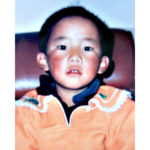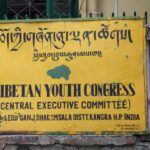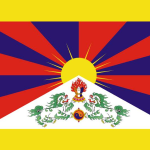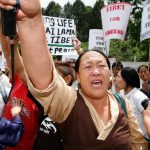“A Case of Cultural Genocide”: Kathmandu Tibetan Refugee Welfare Office’s Karma Gyaltsen
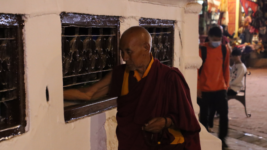
These days, there are around 20,000 Tibetan refugees living in Nepal. This is a nation that shares a common border with the country Tibet, which is now referred to as the Tibetan Autonomous Region: a province of China.
Although, the use of the term “autonomous” is something of a macabre Chinese Communist Party joke.
There is nothing self-determining about the lives of Tibetans living in their once free and independent nation, or for those living in regions of their homeland, which have been designated parts of other Chinese provinces, such as the area of Kham now classed as part of Sichuan.
This year Freedom House has ranked Tibet the least free country on the plant, alongside Syria and South Sudan. Indeed, in Tibet, open expressions of Tibetan religion and cultural identity can be considered acts of dissent to be cracked down upon.
So desperate is the situation in the Tibetan homelands that 159 Tibetan people have self-immolated, or burnt themselves to death, since 2009, in protest of the repression Beijing inflicts upon their people, which has only been increasing under the rule of Chinese President Xi Jinping.
Undocumented refugees
For Tibetans living in Nepal, they don’t face some of the most oppressive conditions on Earth as do those back home.
There is no arbitrary detention, no stamping out of their religious practices and no requirement to send children to boarding schools to be assimilated into Chinese cultural ways and be taught in Mandarin.
But life’s not perfect either. From 1959, when the CCP consolidated its power over the nation of Tibet, the Nepali government permitted those fleeing the colonising power to reside in its territory and be registered and recognised as refugees.
However, since 1989, the Nepali government stopped allowing fleeing Tibetans to reside permanently in its country, and from 1995 onwards, it stopped issuing Tibetans living within Nepal with identification cards displaying their refugee status, even if they’re born there.
This effectively restricts their participation in civic life and the broader economy. As undocumented people, Tibetans cannot apply for regular jobs, and neither can they open bank accounts or obtain drivers licences. And this can also cause obstacles to education and housing.
Ensuring Tibetan welfare
The Tibetan Refugee Welfare Office in Kathmandu was established in 1960. And its chief purpose back then was to assist Tibetans fleeing into Nepal. These days, however, its chief function is the provision of welfare services to the thousands of undocumented Tibetans living in the country.
Back in 2005, the Nepalese government even forced the TRWO’s closure. But a year later, it allowed it to recommence its operations, although this has been without official registration, so the refugee organisation currently operates in a legal grey zone.
Sydney Criminal Lawyers sat down to speak with TRWO secretary Karma Gyaltsen in the organisation’s somewhat hidden office in the nation’s capital to ask about what its functions are, the plight of those still living in his homeland, and the issues Tibetans in Nepal are currently facing.
Mr Gyaltsen, the Tibetan Refugee Welfare Office in Kathmandu is part of the Central Tibetan Administration located in Dharamshala in India. Is that correct?
Yes, it comes under the CTA Department of International and Foreign Relations. We have seven departments in Dharamshala. We call this office the Tibetan Refugee Welfare Office due to the political situation.
We have many offices of the Tibetan Department of International and Foreign Relations in place like Japan, the United States and in Europe. But they call it the Office of Tibet. But here we call our office the Tibetan Refugee Welfare Office.
How many Tibetans has your office helped?
We don’t have exact data. But all over Nepal, in Kathmandu, Pokhara and in remote areas, we have around 15 to 20,000 Tibetans living here.
Despite decades of having accepted them, Nepal stopped permitting Tibetan refugees to remain permanently in this country.
However, Nepal remains the main transit country for Tibetans fleeing Chinese rule on their way to another future.
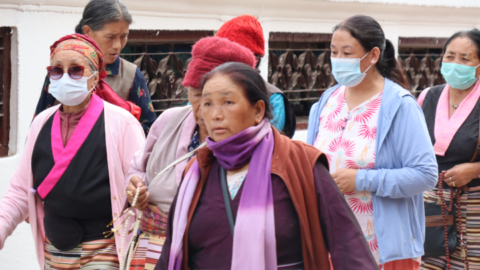
What about Tibetans fleeing into Nepal these days?
Actually, today the borders are very strict. So, nowadays, we don’t have many new Tibetan arrivals from Tibet. This is since 2018.
The borders near Tatopani and Rasuwa have become very strict. So, it’s very difficult for Tibetans to enter Nepal.
We have very few arrivals in Nepal now. And those that do arrive stay in a reception centre for Tibetan arrivals from Tibet.
They stay in the reception centre for two or three weeks. After that they go to India to Dharamshala, to pursue their education or to have an audience with His Holiness.
So, they can’t stay here permanently?
No. Not since 1989.
What sort of work does your office do today in assisting Tibetans living in Nepal?
Our office looks after the welfare of Tibetans living in Nepal in areas of education, health, social activities, and to preserve our Tibetan culture and religion.
Our office acts as a bridge between the Central Tibetan Administration, and Tibetans living in Nepal.
This office also has a good relationship with foreign embassies and diplomats working in Kathmandu.
Freedom House has been rating Tibet the most unfree country in the world on an annual basis for some years now. How do you understand the situation to be in Tibet?
Nowadays, the situation is very tense, due to COVID. Most Tibetans are quarantined. Tibetans, even if they aren’t sick are forced to stay with other sick people. That’s the main problem that’s currently happening in Tibet.
Besides that, we have no freedom to celebrate or practice our own religious activities. They’re trying to destroy our Tibetan culture and religion.
In Tibet, there is no freedom. The destruction of the environment is terrible. There are so many things that threaten it.
The Chinese have a very repressive policy in Tibet.
The portrait of His Holiness is not allowed in Tibetan households. And besides that, for education, the young Tibetans are forced to learn in Chinese-Mandarin, and the Tibetan language is a secondary language.
So, it’s a case of cultural genocide.
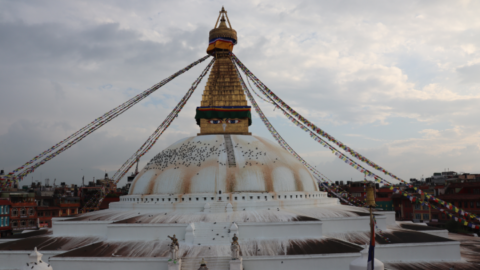
Your organisation was established in 1960. However, the Nepalese government determined to close it in 2005. It was then permitted to recommence operations again the following year.
How is the standing of your organisation in this country today?
We have offices in the Tibetan settlements. But this is the head office, which overlooks the Tibetan office and the Tibetan peoples living in all Nepal.
When we look into Nepalese laws, our office isn’t registered. So, we always fear that the Nepalese government will come and shut down our office.
It’s very difficult. Whatever we have at our disposal, any resources, we do our best to serve Tibetans with.
We always keep a low profile. We do not give interviews or filming to organisations. We also have advice from some of our friends in the government that we have to keep a low profile.
What are the problems that Tibetan people are facing here in Nepal?
The main problem is we don’t have any identification cards. We don’t have any refugee status. From 1995, the Tibetan government has stopped issuing refugee cards for Tibetans.
That’s why we have a lot of problems. Without a refugee card, we can’t open a bank account. We can’t get any good jobs. We can’t travel to other countries.
So, these are the main problems. We have been asking the Nepalese government to issue a refugee card and an ID card for Tibetans living in Nepal.
So, people before 1995 have a refugee card?
Yes. After 1995, they stopped issuing refugee cards for Tibetans who are above 16 years.
So, if this means they can’t get a job and they can’t open a bank account, how do Tibetans survive?
They can work. They are doing farming. Some do souvenir businesses. There is a law against this, but they don’t go with it.
Refugees aren’t allowed to do any business. They have to stay in a camp. But in Nepal, it is free.
So, Tibetans have opened shops. They have restaurants. These shops and restaurants are registered with the Nepal government, and they have a company certificate.
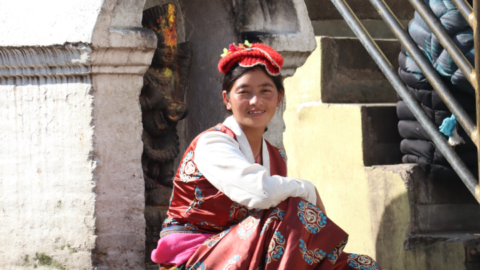
And lastly, Mr Gyaltsen, organisations like yours are still needed because the 6 million Tibetans continuing to live in their own country survive under a harsh system of repressions.
Your work involves bettering the situation for people adversely impacted by this situation.
But how do you foresee the situation in your homelands developing into the future? And what is your hope in this regard?
We always have to be optimistic that one day truth will prevail, and we will go back to Tibet.
The Central Tibetan Administration has a middle way approach, so we have to stay under the constitution of the CCP. We are hoping for this kind of solution.
One day China will give us our freedom to stay under the constitution. The Middle Way policy is the best policy. So, we can go to Tibet and preserve our own religion, culture and we can stay in our own country.


